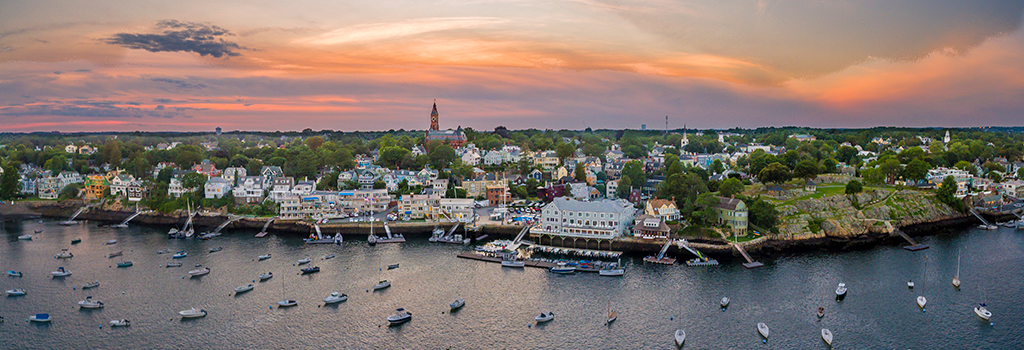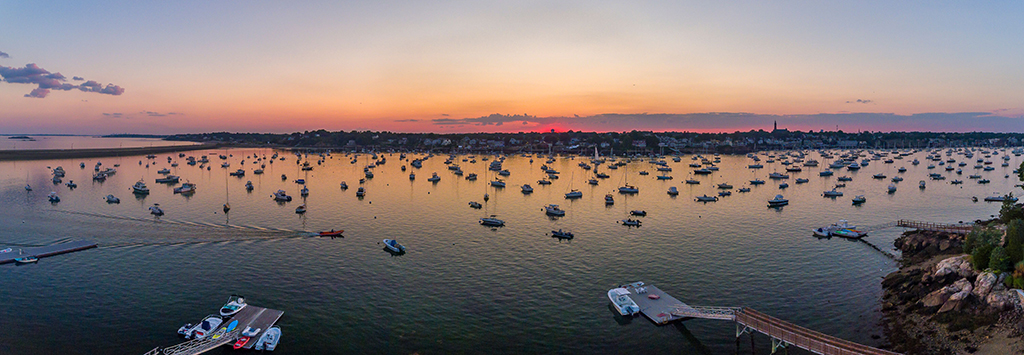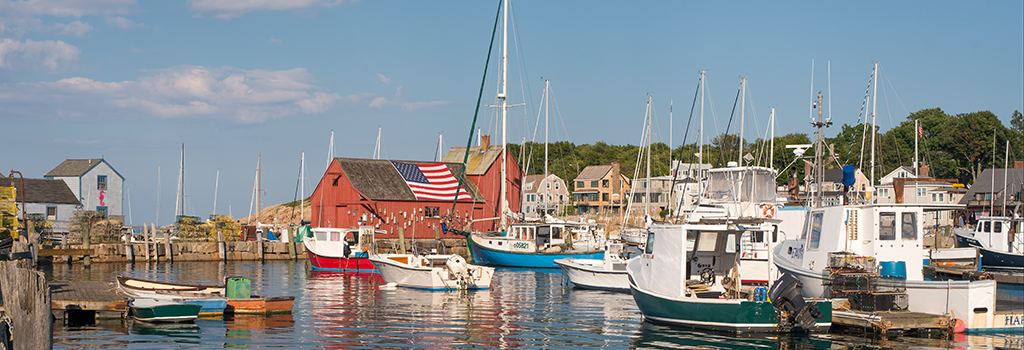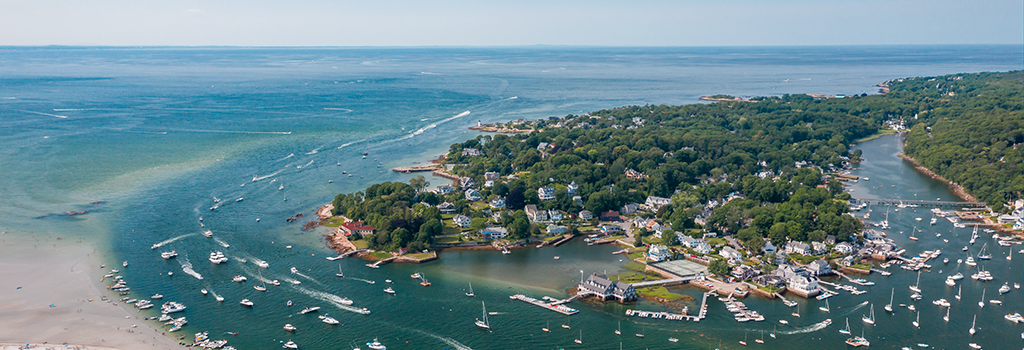Nearly 60% of rural counties shrank in population last year, up from 50% in 2009 and around 40% in the late 1990s.
In all, almost eight in 10 of the counties that lost population over the past three years were outside of metropolitan areas, according to an analysis of Census data by William Frey, a demographer at the Brookings Institution.
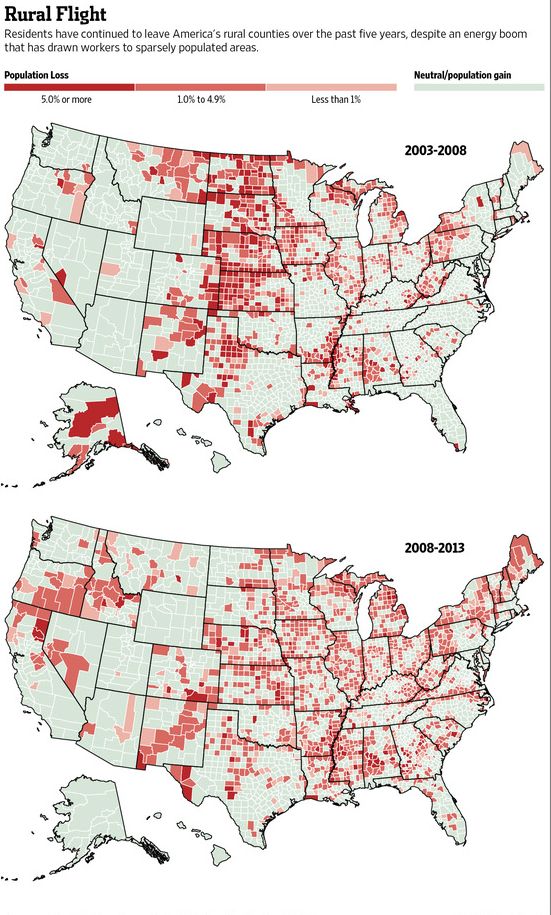
The Wall Street Journal: http://on.wsj.com/Qx2rdj
Large swaths of rural America are struggling with shrinking populations despite an oil boom that has drawn a surge of residents into states such as North Dakota, a trend that mirrors the shift from an economy revolving around farming and manufacturing toward a greater reliance on high-level services.
New data, taken from a Census report on population trends released Thursday, offer a snapshot of the challenges America's rural counties face as they struggle with aging populations and a stream of younger residents heading elsewhere for work.
Rural America—which encompasses roughly three-quarters of the nation's landmass—has seen slower population growth for a decade, as more young people move to urban and suburban areas for jobs and even aging retirees seek out more-populated places to live.
Such developments present a mixed bag for the economy as a whole: While ongoing population losses mean mounting challenges for remote rural areas, most economists see the movement of workers to better jobs in more populous areas as a sign of a healthy, efficient economy.
The population decline from pockets of Midwestern states such as Iowa, Illinois and Kansas comes at a time of rapid expansion elsewhere on the Great Plains. North Dakota, now in the midst of an oil-drilling boom, has become the country's fastest-growing state after more than half a century of stagnation. As of last summer, six of America's 10 fastest-growing metro areas were in or near the Great Plains, including Fargo, N.D., and Odessa, Texas, the Census data shows.
By contrast, population losses are now gathering steam in areas of the industrial Midwest, including northern Pennsylvania and western New York.
Greenwood County, in eastern Kansas, is among those struggling with a falling population. The county, whose seat is in the small town of Eureka, has seen its population decline about 4% between 2010 and 2013, following even bigger declines in the 2000s.
The declines have reduced its tax base, prompting the county to raise land taxes on the mostly agricultural businesses in the area. It also makes providing services harder. Cole Conard, a businessman and one of the county's three commissioners, said one of the area's school districts had 1,050 students in 1970—a figure that has since dwindled to less than 400. "You can't draw businesses in because we don't have people," he said.
Aging remains a big driver of population declines across much of rural America.
The number of births in the U.S. last year exceeded deaths by the smallest margin in 35 years, according to Kenneth Johnson, a demographer at the University of New Hampshire. All told, in roughly a third of America's counties, more people died than were born. This "natural decline" was most acute in rural counties, about 40% of which tallied more deaths than births last year—a rate more than twice what was seen in metro counties, Mr. Johnson said.
This decline, he said, is "the ultimate demographic consequence of decades of out-migration of young adults."
Meanwhile, more older Americans are retiring, which often entails a move to more populated regions. The fastest-growing metropolitan area in America last year was the Villages, a retirement community in central Florida that saw its population jump by 5.2%.
Such trends are disproportionately hurting population growth in rural areas.
"Despite the population gains in North Dakota and other parts of the Midwest, rural areas as a whole are still lagging," said Mark Mather of the Population Reference Bureau, a nonprofit demographic research group.
Back in Greenwood County, Matt Wilson, the owner of Invena, a 35-person manufacturing firm, said his biggest challenge is recruiting skilled workers. Most young people leave the county for big cities—but unlike him, most people don't return. Once machinists and mechanics earn big paychecks elsewhere, "it's hard to get them to come back home," he said.
"It becomes a self-perpetuating death spiral," Mr. Wilson said. "It's not that people aren't moving here, it's that people are dying and moving away faster."
http://on.wsj.com/Qx2rdj

